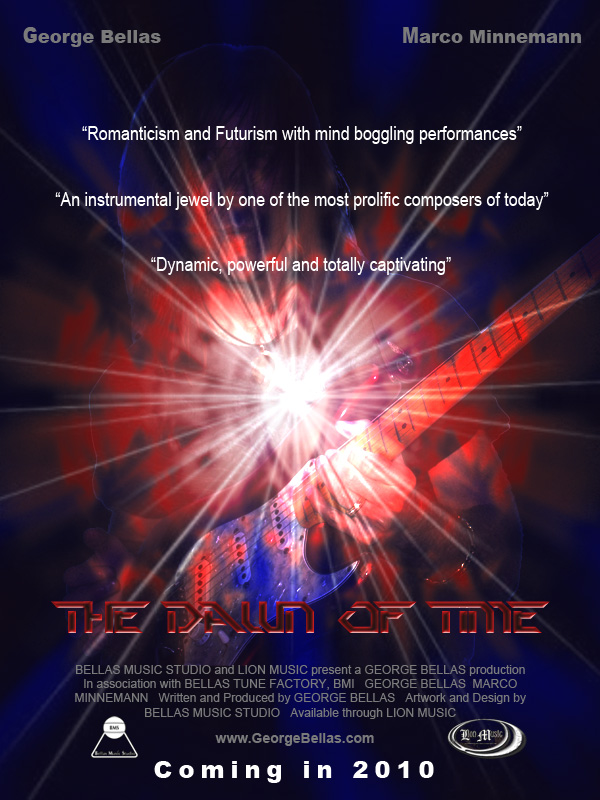
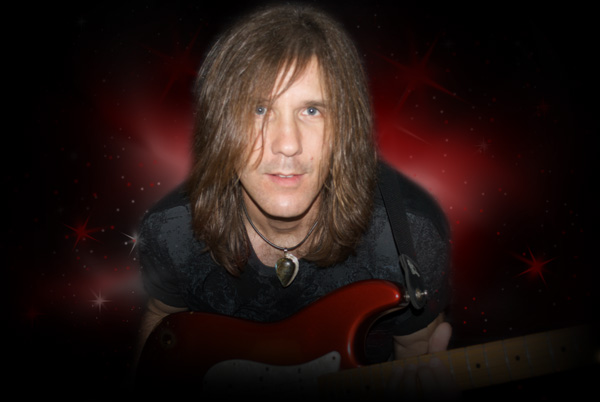
The Dawn Of Time
In the beginning there was nothing... And then there was light!
Fifteen billion years later George Bellas presents to you an epic collection of instrumental songs inspired by the universe, how it was created, and from where and what it came from.
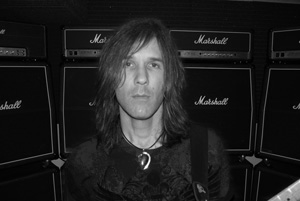
George Bellas - Guitar, Bass and Keyboards
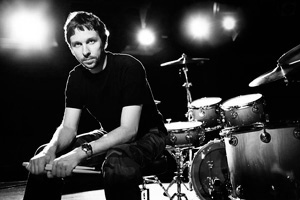
Marco Minnemann - Drums
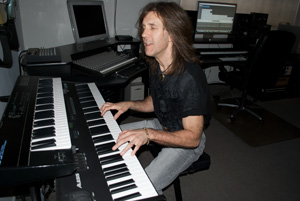
Working through keyboard parts.
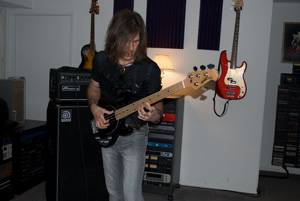
Recording bass with a Musicman Stingray.
Gear Used on the Album
For the recording sessions, George used an assortment of gear that includes; Strats, Les Pauls, Flying V's, a Musicman Stingray bass, a Precision bass, Marshall amps, an Ampeg SVT Classic bass amp, Sure SM57 and Sennheiser MD421 Microphones, a Focusrite Red Series Mic Pre, Apogee converters, a custom microphone isolation box, Tube Screamers (Keeley modified and some stock), custom designed pedals by Nokina Design, Coleman Audio Monitoring System, Mogami cables, Apple computers, Logic pro software and a extensive sound library.
George used a Musicman Stingray bass and a Fender Precision hybrid bass for the recordings. The bass guitar was recorded direct out of an Ampeg SVT and the cabinet (an Ampeg 6x10 with Horn) was also mic'ed using a Sennheiser MD421. A custom built isloation box was used to enclose the microphone which yielded a more dynamic tone with less room reflections.
Composition Style
The material on this album is a stylistically diverse collection of shorter 3-5 minute songs with a total running time of 80 minutes. Some of the songs are in a complex progressive style, and others are in a more traditional neoclassical style. An extreme amount of attention went towards obtaining the highest quality sound for each instrument. The guitar, bass, drums and keyboards all sound clear, open, dynamic and very organic. And once again, Marco Minnemann recorded some absolutely phenomenal drum performances.
The Dawn Of Time was released July 16, 2010 on Lion Music.
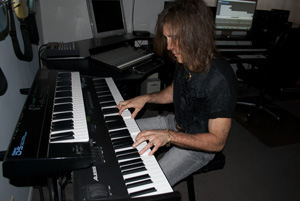
Contemplating chord voicings.
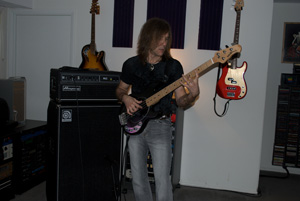
Playing through an Ampeg SVT.
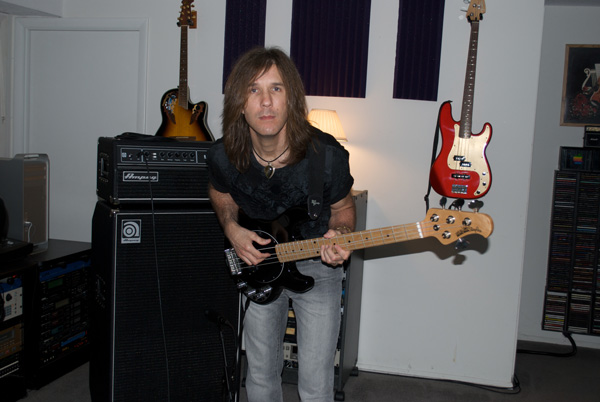
Playing through an Ampeg SVT.
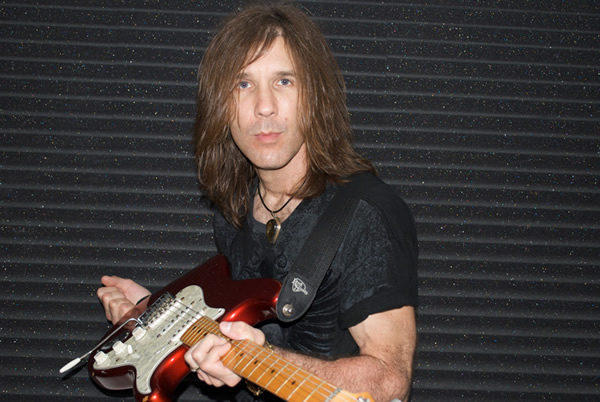
Using the beloved candy apple red strat.
Inspiration
The Dawn Of Time was inspired by the writings and lectures of great physicists of both past and present; Albert Einstein, Carl Sagan, Michio Kaku, Stephen Hawking, Amy Mainzer, and Brian Green, to name but a few. "Thanks to the great minds of science for their achievements and ongoing research regarding the origin, present state, and fate of the universe we live in, and from them, I have gained invaluable insight and an enormous thought provoking source of inspiration that fuels my imagination each and every day."- G.B.
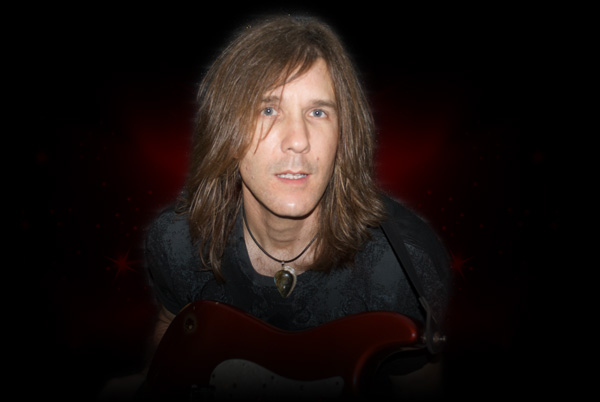
The Dawn Of Time
Composed and produced by George Bellas.
Published by Bellas Tune Factory, BMI
International Copyright Secured.
Creating The Dawn Of Time
CONCEPT
"The Dawn Of Time" was inspired by the universe, how it was created, and from where and what it came from. Having always had a love and fascination for science, especially astrophysics, this album represents a creative expression of the visions produced from studying the works of great scientists such as: Albert Einstein, Carl Sagan, Michio Kaku, Amy Mainzer, and Brian Green, to name but a few. Their research, thought-provoking lectures, and writings have had a profound impact and are a major source of inspiration and enlightenment.
WRITING AND RECORDING
The voracious writing process began shortly after the previous release "Step Into The Future" was turned into the record label. As is usually the preliminary case, all instrument parts were meticulously scored out one note at a time, followed by the recording of the guitar, bass, drums and keyboards. The guitar was recorded through a Focusrite Red Series mic preamp into an Apogee Rosetta 800 converter, and then optically straight into a DAW through an RME PCI card. The bass guitar sound on this album was recorded differently from previous releases. For this album a Musicman Stingray bass plugged into an Ampeg SVT Classic amp and cabinet was used. A Sennheiser MD321 microphone was used on the bass cabinet and then combined with the direct output of the amp. Another factor of achieving the bass tone was using a custom made isolation box for the microphone, not an iso-box for the whole cabinet, but just for the mic. Having the isolation box surround the mic allowed the option of selectively increasing or decreasing the amount of room reflections. For guitars and amps, the usual assortment of Fender Strats, Gibson Les Pauls, a Marshall 1976 MKII, a Marshall JCM800, and a few JCM900 Marshall amps were used. For the majority of the album no compression was used, and in the few spots that it was used it was a minimal amount.
GOAL
The goal of the design esthetics was to have arrangements that were short and accessible, and the songs to be euphonious and tonal, especially when compared to the previous album – which was a single 75 min song and atonal for the most part. For some of the songs, compositional techniques and elements from the baroque, classical and romantic eras were utilized, and other songs gravitated more on the progressive side by using modern aspects of music composition. Another important factor was the melodies; some of the melodies were written in a lyrical style, and others in a virtuoso instrumental style. Having a pleasing balance of the two melody types was one of the goals in achieving the sonic vision for this album.
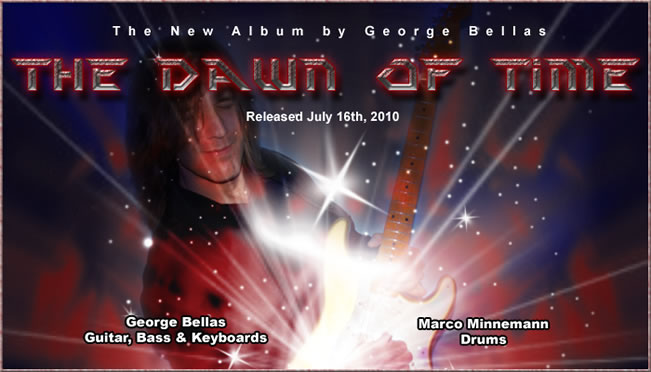
Track Descriptions
Cyclone
From electrons and protons that rotate around their nucleus, to planets and entire galaxies that orbit one another, the rotational force is an integral part of the construction and operation of the universe as we know it. This song mimics that motion with a swirling momentum of rhythm under a tuneful melody. The drums are very efficacious in giving this song inertia and propelling the gyration. The form is a simple song structure with a ferocious middle solo in a chilling mode 4 of harmonic minor.
Seeding The Universe
A vision about sprinkling matter and life throughout the universe. How did life originate on Earth? Our planet, after all, is a conglomeration of star stuff and space debris, so perhaps life as we know it originated elsewhere and was brought here by some means yet to be concluded. Perhaps there is room in both science and religion for finding the answer. Musically, this is a progressive song built on changing meters and exotic modes.
Let There Be Light
In the beginning there was nothing... and then there was light. A nanosecond later, when everything began expanding, dimensions folded, and fundamental forces broke apart, the universe as we understand it came into existence. The main theme is in a virtuoso classical/romantic piano style, along with baroque counterpoint in the middle section. Several common practice period elements are used throughout, which include: Augmented 6th chords, the Cadential 6/4, Secondary Dominants, Period Modulatory Devices, Counterpoint, and an abundance of chromatic Non-Harmonic Tones.
The Dawn Of Time
A progressive song that utilizes a multitude of odd-meters along with exotic scales and unusual chords. The dream-like theme in section A is contrasted with an aggresive transition containing some wide interval lines played on guitar. The bass in this song is big, fat, round and way up front. A Musicman Stingray bass was used along with an Ampeg SVT classic amp, which was recorded direct and with a microphone.
Machine Man
A vision of both ancient and modern man using technology within their respective times, such as clever machinery used to build the pyramids, as well as modern day man who is ever increasingly reliant upon computers and a plethora of networked electronic technologies. This song begins with a fat sounding bass guitar and then is slowly built upon with other instruments being added one after another.
Voyage To Triangulum
This is an imaginary voyage to a distant galaxy called Triangulum. The Triangulum Galaxy is a spiral galaxy that is part of what is referred to as the local group of galaxies and is approximately 3 million light years from earth. If you were to travel 186,000 miles per second it would take 3 million years to get there. It is a slow paced song with lots of emotion packed guitar playing within a neoclassical framework. This song was first performed at a concert with Uli Jon Roth.
Mysterious Light
Standing alone outside on a darkened summer night, a distant light appears in the sky, it moves, it's approaching, what is it? This is a progressive song that uses odd-meters, poly-meters, exotic scales and unusual chords. The intro to this song contains a question answer statement that starts with 1/16, 2/16, 3/16, 4/16, 5/16, 6/16 and 7/16. And in between each one of those meters is a response with the same meters but in reverse order, beginning with 7/16. In other words, after 1/16 the response is in 7/16, then 2/16 with a response in 6/16, then 3/16 with a response in 5/16, etc.
Mystical Dream
A neoclassical song in G minor that has a triumphant marching feel. Just prior to theimrpovised solo section there is a transition that contains an arpeggiated guitar and harpsichord, pizzicatto celli, staccatto violas and a countermelody played by the oboe. A 100 watt JCM 800 amp was used for this song along with a stratocaster. The recapitulation contains additional subordinate lines played by the violins, french horns, and oboes.
Glimmering Stardust
The clean sound of the main theme brings to mind drifting stardust glimmering throughout space. The following part, in contrast, contains some aggressive 2-part counterpoint. The end coda is an ethereal heart felt guitar improvisation that has a "floating in the ether" type of feeling. For the recording of this song, a stratocaster plugged directly into a 1976, 50-watt, non-master volume MKII Marshall amp was used.
Electromagnetic
Not only is our planet built and functioning upon electromagnetism, but societies around the globe have become heavily reliant on it for day to day living. Musically, this is an aggressive neoclassical song containing counterpoint and ferocious guitar solos.
Genesis Of Life
A mesmerizing, progressive song about the miraculous creation of life. This song utilizes several odd-meters, along with poly-metrical interplay that occurs between the melody and rhythm during the main theme.
Carbon Creature
Life as we know it is carbon based, and this is an imaginative portrayal of it. This song has a slow and heavy, odd-meter rhythm, attempting to portray some sort of slow moving creature. The main theme contains tightly woven counterpoint, and the middle solo section runs rampant in a drastic change containing some complex timing.
Suns of Andromeda
This is a vision of what the universe might look like from within the galaxy of Andromeda. Imagine being on an Andromeda planet that has a binary or ternary star system... looking up at the sky and seeing multiple suns must be truly breathtaking. The song is very relaxed with a lyrical main theme that is dispersed over a variety of delicate textures. The middle section contains a 2-part Crab Canon, which is a melody played forwards and backwards at the same time.
We Are Not Alone
This song was written while pondering the thought of intelligent life elsewhere in the universe. At 5 years old, George wrote a book entitled "The Man From Outer Space", and all throughout his life since then, he has always believed that there must be other life in the universe, both simple and complex. Carl Sagan once said something to the effect of: "If there isn't any other life in the universe besides us, it sure would be a lot of wasted space." Musically, this song is in a neoclassical style with a contrapuntal melody in section one, and an ethereal solo section that follows.
Nightmare Awoken
This song has an eerie and haunting vibe to it, especially the middle section. The idea is that of an ancient nightmare which has been dormant for eons and has now been awoken. Several factors helped in producing the unsettling sound of this song, in particular, the horn accents which lend themselves to the element of surprise, while the slower pace of the song brings out the "creeping up on you" vibe, and the sudden drop in dynamics during the phantom organ interlude in the middle.
Primordial Atom
Everything as we know it, which is the entire universe and all it contains, in an infinitely small state, a singularity of sorts. This song is an explosion of virtuoso guitar and piano playing performed in unison, with counterpoint, a variety of instrumentation, and an explosive coda. The bass guitar is very active in this song. It was indeed two and a half minutes of the impossible, and a lot of fun to record.
Metropolis
A vision of a fast paced, modern society. The song itself is not fast in tempo, but it indeed portrays visions of the hustle and bustle of the busy world in which we live in. The song was built around the introduction's moving bass line.
Always At My Side
This song was written for and dedicated to a best friend of many years. Crushed to the very core after fifteen years, this song is a display of heart drenched emotion. The end solo is a first take; with eyes closed and in a transcendental state, it is a capture of pure, honest emotion.
The Angels Are Calling
A sonic interpretation of the end of humankind. Many speculate and suggest that we are living in the end times, and this song is a portrayal of angelic beings calling upon the human race. Musically, this song is built upon poly-meters. After the introduction, the next few sections each utilize 3 simultaneous time signatures; the drums are in one meter, the bass and guitar in another, and the melody in yet another, which are all heard simultaneously. It's a mind melt, but an interesting way the parts are lined up and threaded together.
